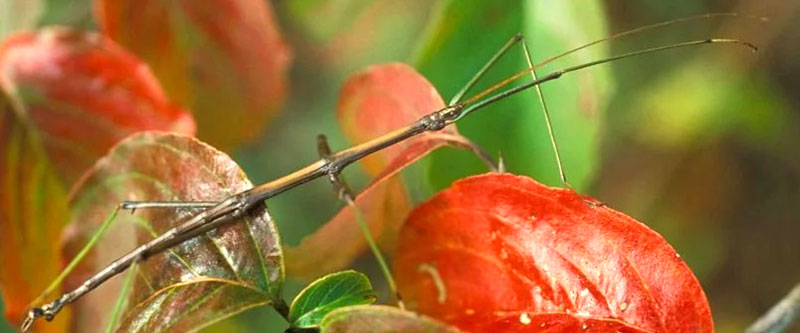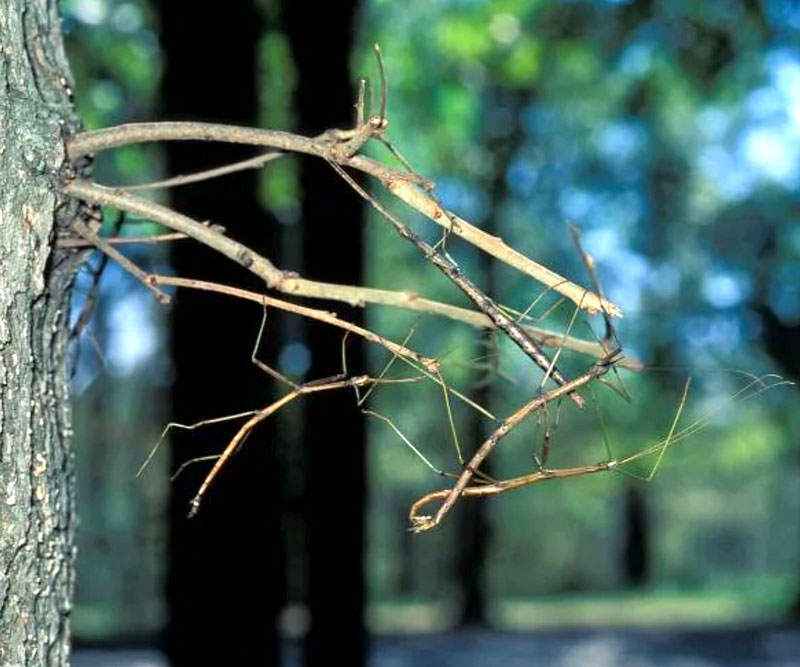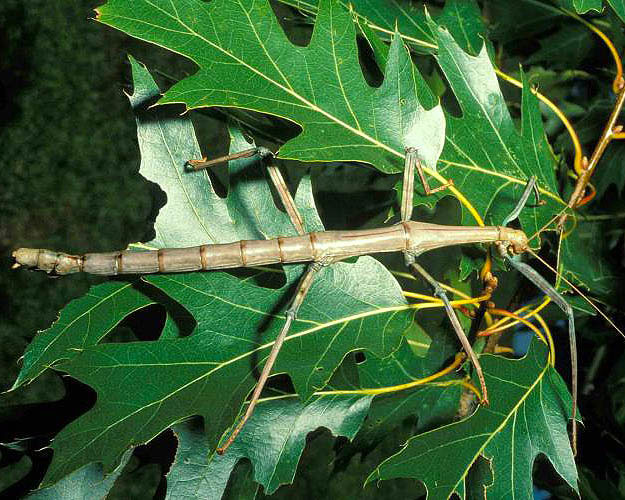Walkingsticks are Curious Insects
Please don’t mistake me for an entomologist. That’s not my background, and I don’t want to represent myself unfairly. But I do marvel at nature, and when something deserves a shoutout, I’m up to the task. Here comes one.

My wife brought me her phone the other night. Someone had posted a photo and asked what a particular insect might be. I told Lynn it was a walkingstick, but I decided a link to some credible website might be more meaningful, so I started a quick search. I learned things I never knew, so I decided to show and tell.
What I discovered about walkingsticks…
• They are mostly tropical insects, but several species in several different genera are native to North America. There are some 3,000 species of stick insects in the world. That’s virtually 3,000 more than I would have guessed.
• The longest insect in the world (Chan’s megastick, Phobaeticus chani) was first observed in Borneo just 15 years ago. It was 22 inches stem to stern counting its extended legs. Body length 14 inches. Click here for a photo and more information.
• Stick insects resemble small twigs. Gee. You might have guessed that from their common name. But it gets even better. Some species can change colors depending on their surroundings, ending up green, brown or gray.

• Some stick insects will fall to the ground and play dead to confuse their natural predators. In doing so they resemble fallen twigs.
• There is one generation per year. Females can give birth to females without mating, but at the end of the season males show up and mate with aforementioned females. Eggs are scattered individually in the leaf litter beneath shrubs and trees. The eggs also get into the camouflage game – they look like seeds.
• As stick insect nymphs grow they shed their skin. They also have the ability to regenerate limbs they have lost to predators, and it is during this molting that that regrowth occurs.

• Stick insects are herbivores, with their preferred plants being oaks and other native trees. They rarely will defoliate trees entirely, and even then they do not do much long-term damage.
• Most of their feeding is done at night. Feel fortunate when you observe them because they normally rest and hide during the day. It’s more of that camouflage game.

Interesting outbreaks…
The Texas A&M Forest Service website notes two unusual outbreaks of giant walkingstick damage in Texas forest populations.
One was in June 1981 on the north side of state highway 81 just west of Bastrop. Trees (primarily oaks) were heavily defoliated, while trees of the same species on the south side of the highway weren’t touched.
In 2000, in a small drainage area 4 miles northeast of Navasota, bois d’arcs and cedar elms were stripped.
Curious that the attacks were so localized and so heavy as to have been recorded by entomologists and foresters at the time.
One of the lines on that Forest Service web page is especially fun to read: “Walkingsticks are docile, slow moving herbivores that are mainly concerned with looking like a stick, eating leaves and mating.”
